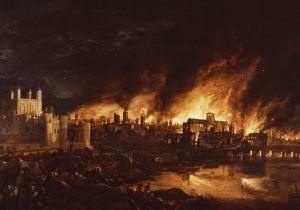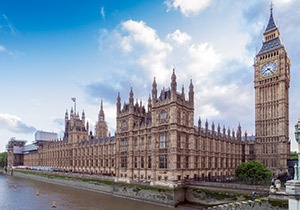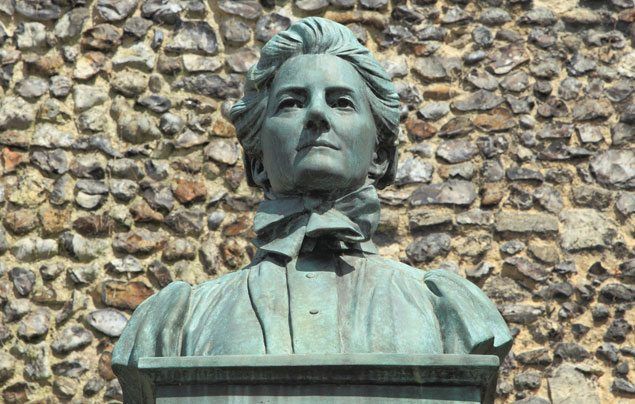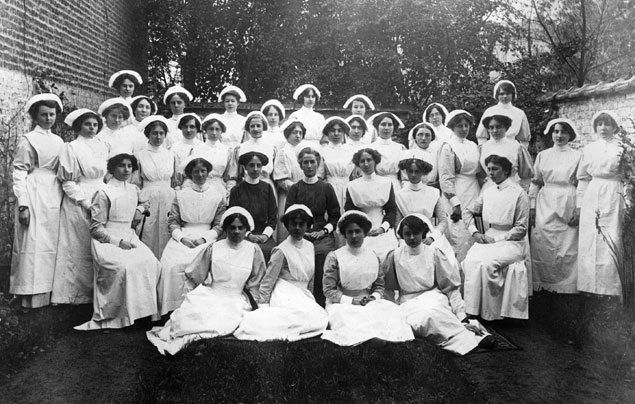The life of Edith Cavell
A pioneering nurse and heroine of World War I…
We’re travelling back through time to meet a one-of-a-kind British nurse who saved the lives of many soldiers during the First World War. She is remembered today for her bravery and compassion, as well as her tragic death, which caught the attention of thousands of people all around the world. Read all about the life of Edith Cavell…
Edith Cavell facts
Full name: Edith Louisa Cavell
Born: 4th December 1865
Hometown: Swardeston, Norfolk, England.
Occupation: Nurse
Died: 12 October 1915
Best known for: Her work as a nurse in the First World War — and for being sentenced to death for helping Allied soldiers escape German territory.
The early life of Edith Cavell
Edith Cavell was born in the village of Swardeston in Norfolk, England. Her parents were Louisa Sophia and Reverend Frederick Cavell — the vicar of a local church. She had three younger siblings: two sisters, called Lillian and Florence, and a brother, called John.
When she was a young girl, Edith and her sisters studied in the vicarage where they lived. She proved quite the artist in her early years and had a passion for painting beautiful flowers.
At around 15 years old, she enrolled at Norwich High School for Girls, and later went to three different boarding schools.
Edith studied hard, and had a particular talent for learning French — a talent that should would use in her working life…
What work did Edith Cavell do?
In 1890, Edith moved to the city of Brussels, in Belgium, to work as a governess (a woman who taught children in a private household) for the François family. She spent five years there, giving lessons to the family’s four children — Marguerite, Georges, Hélène and Eveline.
She proved to be very good at her job, too, taking a kind but strict approach to teaching. During her time in Belgium, she also continued to paint and perfect her French.
Sadly, in 1895, Edith’s father fell ill and Edith returned to Swardeston to be with him. But, all’s well that end’s well, as they say! Edith assisted in nursing him back to health, and was left feeling inspired. Edith Cavell now had a new passion — she wanted to become a nurse.
Edith Cavell’s career as a nurse
In 1896, Edith spent a few months at the Fountains Fever Hospital to see whether nursing was the right profession for her. And what do you know… it sure was! Later that year she was accepted at the Royal London Hospital to begin her professional training.
It wasn’t long before Edith put her nursing skills into action. In 1897, a deadly disease called Typhoid broke out in the town of Maidstone in Kent, England, and Edith — along with several other nurses — was sent to help those suffering.
She did a great job, and even received a ‘Maidstone Medal’ – an award given to those who worked hard to beat the deadly epidemic. Yay for Edith!
Edith Cavell returns to Belgium
Over the next few years, Edith worked in a number of hospitals in England. But come 1907, she was asked to return to Belgium to help look after a sick child, under the care of Dr. Antoine Depage.
By this point, Edith was a well respected nurse and it wasn’t long before Dr. Depage had another job for her — an important job with lots of responsibility.
He opened Belgium’s first nurse training school called L’École Belge d’Infirmières Diplômées (The Berkendael Medical Institute) and put Edith Cavell in charge. She proved to be the perfect person for the job and made the school a great success.
In fact, Edith did such a good job that after just one year, she was training and providing nurses to three hospitals, 24 schools and 13 nurseries. Impressive stuff, eh?
Edith Cavell and World War I
In 1914, during one of her trips back to Norfolk to visit her family, news reached Edith about the outbreak of the First World War — a huge war fought between the Allies on one side (the British Empire, France, Belgium, Russia and later, the USA), and the Central Powers on the other (Germany, Austria, Hungary, Bulgaria and Turkey).
After hearing about all the men being sent off to fight in bloody battles, she decided she must help. And so once again, she set off back to Brussels in Belgium, where her hospital had been converted to a Red Cross hospital to care for war victims.
There, she encouraged the nurses to treat any soldiers that came through their doors, regardless of which side they were fighting on.
In August 1914, German forces advanced into Belgium and took control of the country. It was at this time that Edith made a decision that would change her fate – she decided to help British, Belgian and French soldiers escape to Holland, a ‘neutral country’ where they would be safe.
Working closely with a secret network of people, she sheltered Allied soldiers in her hospital until they were well, and then smuggled them out through an underground passage. She also helped to provide them with a bit of money, fake identity cards and secret passwords for their escape.
Over time, the German police became suspicious of Edith, and her colleagues urged her to flee to save herself. Edith refused, and insisted on staying and helping Allied soldiers leave Belgium.
But in August 1915, disaster struck when a Belgian spy discovered the secret tunnel beneath the hospital and reported it to the authorities. On 3 August, Edith was arrested and kept in seclusion. When interrogated by German officials, she chose not to lie and instead confessed to everything…
Help Edith Cavell!
Word of Edith’s arrest spread far and fast, and there was an international outcry urging that she be released.
Many people felt she should be treated with mercy, given that she had done so much work to help and look after both Allied and German soldiers.
Sadly, their cries went unheard, and following a short trial, Edith was found guilty of treason and sentenced to death.
Politicians from different countries pleaded that her death sentence be reconsidered, but the decision was final. And, tragically, on 12 October 1915 Edith Cavell was executed by a German firing squad in Brussels.
After Edith’s death…
Edith Cavell’s body was buried at the rifle range where she was executed. But her name lived on — very much so, in fact.
Many newspapers, particularly in Britain and America, wrote about her death and how heroic Edith Cavell was. They also used her execution as ‘propaganda’ — to make people think of the German forces as brutal and cruel, and to encourage men to join the war and fight against them.
But many people argue that this was far from what Edith would have wanted. To this day, people are amazed by the incredible dignity with which Edith met her death.
She accepted her sentence, describing it as “just”, and even showed complete forgiveness towards her executioners. During a visit from a reverend named Stirling Gahan the night before her execution, she said the famous words:
“Patriotism is not enough; I must have no hatred or bitterness to anyone.”
On 13 May 1919, after the war had ended, Edith’s body was returned to England. A memorial service was held for her at Westminster Abbey in London, and thousands of people lined the city’s streets to pay their respects.
She was later reburied at Norwich Cathedral, near her hometown of Swardeston.
How is Edith Cavell remembered?
An important figure in European history, Edith Cavell is recognised as a pioneer of modern nursing in Belgium. She is remembered for saving the lives of many soldiers during World War I, regardless of which side they were fighting for.
What’s more, she put the safety of others before her own, and accepted her fate with incredible dignity.
In 1920, a statue of Edith Cavell was unveiled near Trafalgar Square, with four words engraved — four words which describe the qualities for which this remarkable woman is best remembered: Humanity, Fortitude, Devotion and Sacrifice.
Did you know…?
Edith Cavell has a mountain named after her in Jasper National Park, Canada.
What did you think of our Edith Cavell facts? Leave a comment below and let us know!
More Like General History

Satellite images hint at lost Mayan city

The life of Nelson Mandela

The Great Fire of London Facts
















LEAVE A COMMENT
THANK YOU
Your comment will be checked and approved shortly.
WELL DONE,
YOUR COMMENT
HAS BEEN ADDED!
COMMENTS
I saw the Edith Cavell statue when I went to London and now I know loads more about then I did before!
this was amazing for a project I'm doing thank you so much!
Cool
Woow
A good tribute to a truly inspirational nurse who was a role model for all in every walk of life.
The content was explained in a brief way where it is easily understandable.
I have a friend called EDITH so her name does go on.
a human of steal and flawless.
wow
CUSTOMIZE YOUR AVATAR